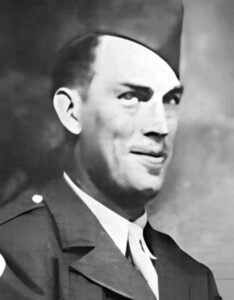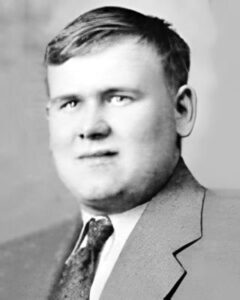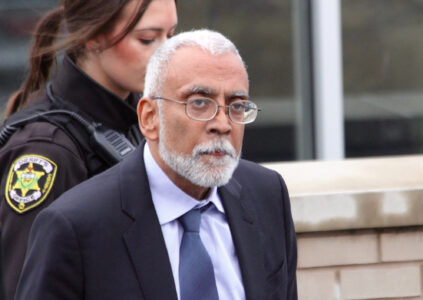Remembering local soldiers claimed by mines at Battle of Anzio, WWII
- PHOTO PROVIDED A photo shows the World War II tank landing ship LST-422 with her front bay doors open.
- Elmer Putman
- Nevin Glossner
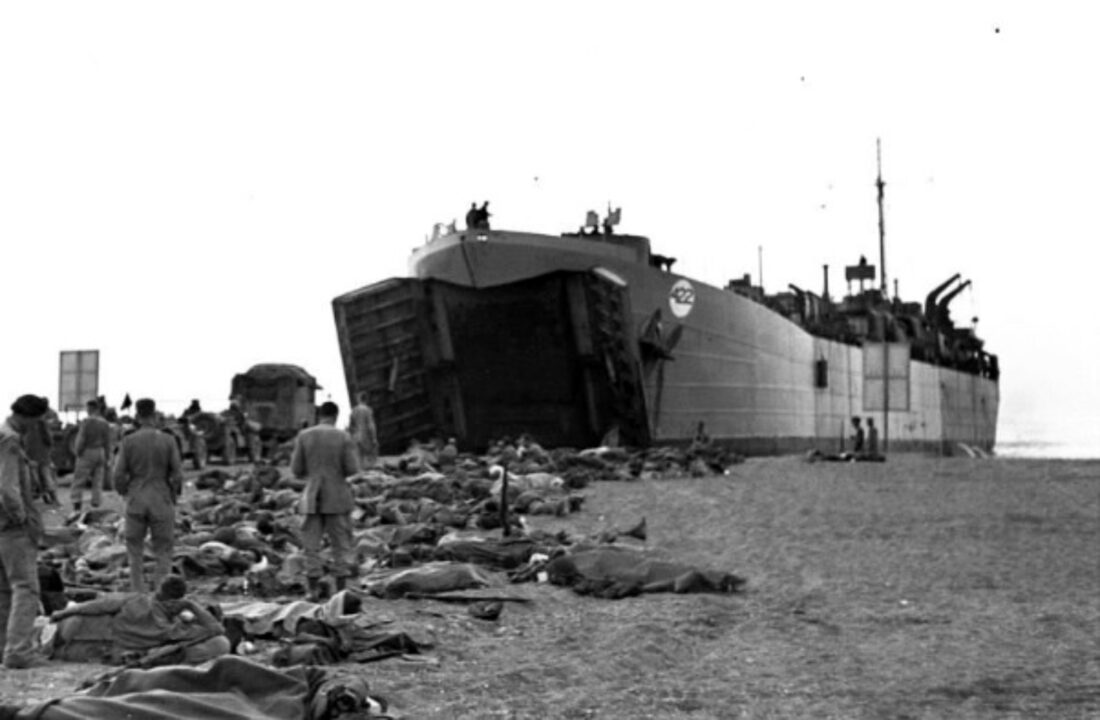
PHOTO PROVIDED A photo shows the World War II tank landing ship LST-422 with her front bay doors open.
As part of World War II’s strategy to liberate Italy from the Nazis, the Allies sent an invasion force of 36,000 troops with naval and air support to land behind German lines at Anzio and to cut off the Germans from their supply lines. A flotilla of 13 LSTs (Landing Ship Tank) sailed from Naples to begin the amphibious landing on Jan. 26, 1944. Aboard LST-422 were Companies C and D, and the Headquarters Company of the 83rd Chemical Mortar Battalion and the 68th Coast Artillery Regiment. Rough seas and gale force winds pushed LST-422 into a German minefield where an exploding mine detonated the landing craft’s flammable cargo and sent the vessel to the bottom. Hundreds aboard LST-422 were killed.
Volunteers with the non-profit Stories Behind the Stars (www.storiesbehindthestars.org) have written memorials honoring the 59 Pennsylvania soldiers who died in the mining and sinking of LST-422. Five of LST-422’s fallen were from Clinton County: PVT Frederick L. Brooks, TEC5 Nevin L. Glossner, PVT John F. Lucas, CPL Bertram G. Martino and PFC Elmer E. Putman.
Frederick Leroy “Bud” Brooks was born on April 10, 1921 in Renovo, Pa., to Fred Ellsworth and Myrtle Florence Grugan Brooks. His father worked for the Pennsylvania Railroad and served in World War I with the 20th Engineer Battalion. Brooks had three brothers and five sisters. He completed one year of high school and worked for the Pennsylvania Railroad in Renovo prior to entering the Army on Sept. 21, 1942 in Altoona.
Nevin Leroy Glossner was born April 23, 1921 in Lock Haven, Pa., to Clyde McCloskey Glossner and Etta Susanna Bierly Glossner. His father worked as an electrician in a silk mill, and the family lived in Allison, Pa. Glossner had three younger brothers, one younger half-brother and one older sister. He was a 1939 graduate of Lock Haven High School and worked as a mechanic for the Pennsylvania Railroad in Renovo prior to entering the Army in Altoona on Sept. 21, 1942.
John Franklin Lucas was born on Dec. 3, 1921 in North Bend, Pa., to Barney Edward and Elizabeth St.Clair Lucas. His father worked in a tannery, and the family lived in Chapman, Pa. Lucas had four older brothers and three older sisters. He had a grammar school education and worked for the Pennsylvania Railroad in Renovo prior to entering the Army at Altoona on Sept. 21, 1942.
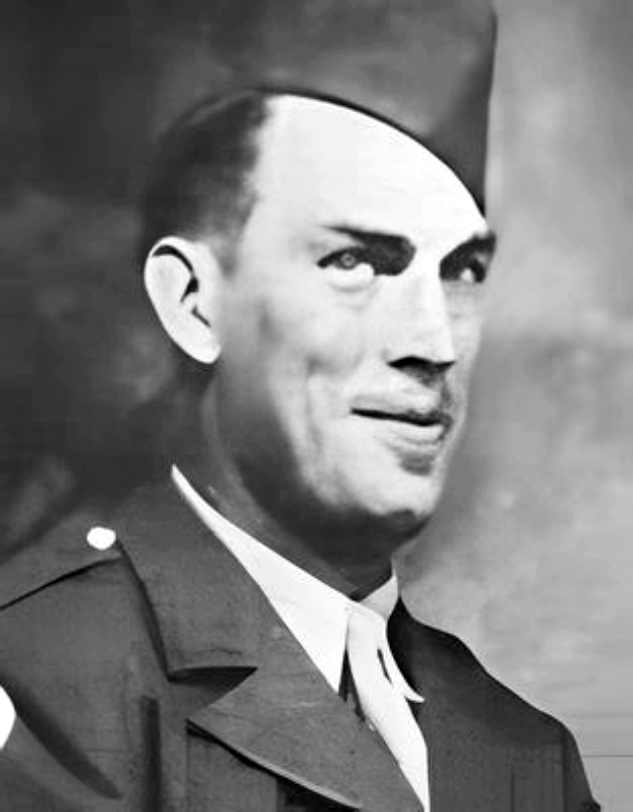
Elmer Putman
Bertram Gerald Martino was born on Sept. 4, 1920 in Renovo, Pa., to Eusanio “Frank Samuel” and Josephine Nose Martino. His father was born in Italy, worked for the PA Railroad and was a barber. Martino had five brothers and three sisters. He graduated from St. Joseph’s High School and worked for the Pennsylvania Railroad in Renovo prior to entering the Army at Altoona on Sept. 21, 1942.
Elmer Eugene Putman was born on July 15, 1920 in Flemington, Pa., to Lester E. and Edna I. Miller Putman. When Putman’s parents separated, he lived with his grandparents. His mother worked as a school custodian. Putman had two younger brothers and one younger sister. He had a grammar school education. Putman enlisted in the Army on Sept. 21, 1942 in Altoona.
Brooks, Glossner, Lucas, Martino and Putman were assigned to the 83rd Chemical Mortar Battalion which was activated at Camp Gordon, Ga., on June 10, 1942. Chemical mortars were developed as incendiary shells, smoke, marker, phosphorous and chemical weapons, including poison gas.
After intense training, the 83rd was deployed to the Mediterranean Theater of Operations on April 29, 1943. The battalion supported a variety of units including the Rangers, the 82nd and 101st Airborne Divisions and the 2nd and 41st British Commandos. On July 10, 1943, the Rangers and members of the 83rd Chemical Mortar Battalion landed on Sicily while facing heavy enemy fire on mined and wired beaches. The 83rd was able to unload their mortars in the heavy surf and were able to silence the enemy firing positions. After much heavy and intense fighting, Allied forces captured Sicily. Following this victory, the task was the liberation of Italy which began on Sept. 9, 1943.
LST-422 attempted to land at the Allied-held beachhead at Anzio on Jan. 26, 1944. High waves postponed the landing and forced the LST to anchor for the night at 1 a.m. Gale force winds and the tide caused LST-422 to drift into a submerged minefield at 5:20 a.m. about 12 miles offshore. A mine’s explosion tore a 50-foot hole in the ship’s hull and detonated munitions and fuel in the LST’s hold. Vehicles that were secured on decks became dislodged and pinned soldiers. Many men were trapped by the troop compartment’s jammed door as the ship sank. Many soldiers who entered the water succumbed to hypothermia or drowned in the frigid water.
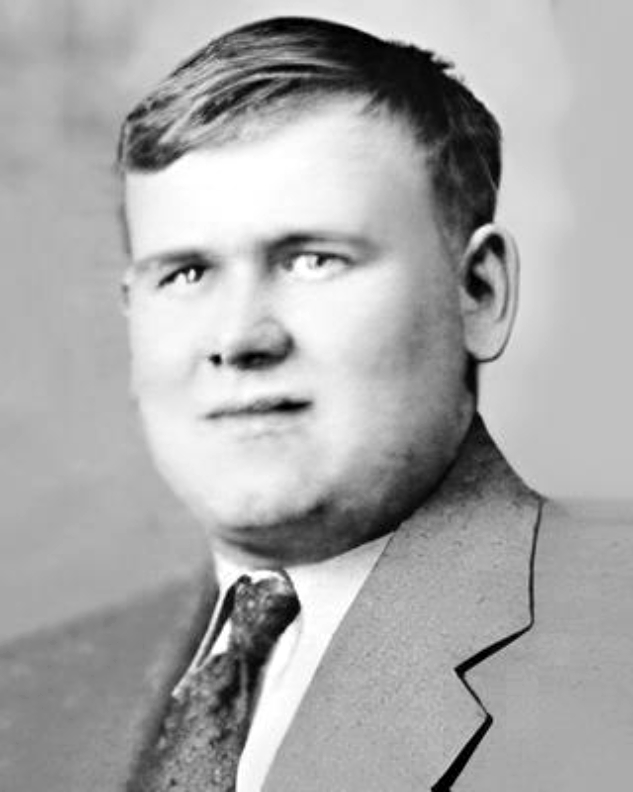
Nevin Glossner
Rescue efforts by other landing craft and minesweepers were hampered by German mine explosions and an air raid, killing 30 men from Landing Craft Infantry 32. Minesweepers pulled 150 men out of the water from LST-422 and LSI-32. The captain and crew of the LST-422 finally abandoned the ship around 6 a.m. LST-422 broke in half and sank at 2:30 p.m.
Total losses were 454 Americans and 29 British sailors. Fifty-three members survived and returned to duty. Thirty-seven of the recovered deceased were given a burial at sea. Fifty-four of the recovered deceased were interred in U.S. Military Cemeteries in Italy. Some 362 deceased are unrecovered or unidentified.
Brooks, Glossner, Lucas, Martino and Putman were five of the soldiers aboard LST-422 who were killed in action on Jan. 26, 1944. Brooks, Martino and Putman were memorialized on the Tablets of the Missing at the Sicily-Rome American Cemetery and Memorial in Nettuno, Italy. Glossner was repatriated to America and buried at the Cedar Hill Cemetery in Mill Hall on March 12, 1949. Lucas was eventually repatriated to the U.S. and buried at the North Bend Cemetery in North Bend. Putman posthumously received the Purple Heart with Oak Leaf Cluster. Brooks, Glossner, Lucas and Martino posthumously received the Purple Heart.
Stories Behind the Stars memorials are accessible for free on the internet and via the smart phone app at gravesites and cenotaphs. The non-profit organization is dedicated to honoring all 421,000 fallen Americans from World War II, including 31,000 from Pennsylvania. To volunteer or to get more information, contact Kathy Harmon at kharmon@storiesbehindthestars.org or visit www.storiesbehindthestars.org.


